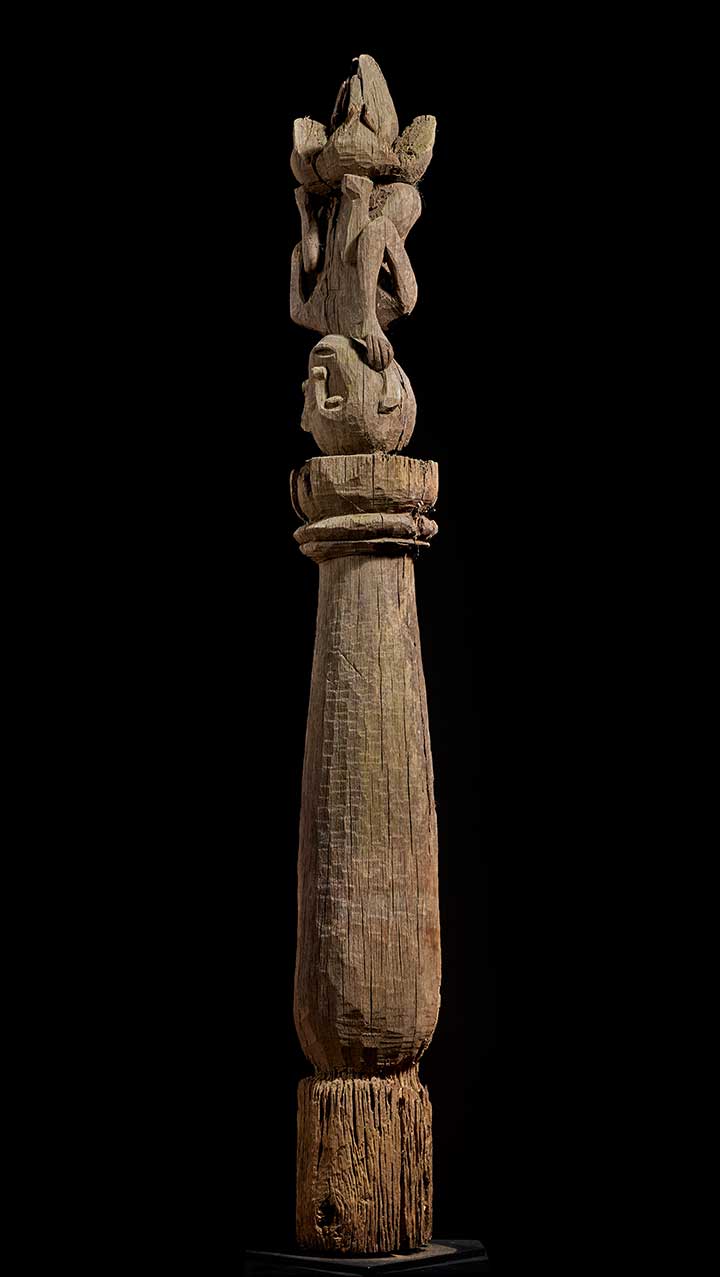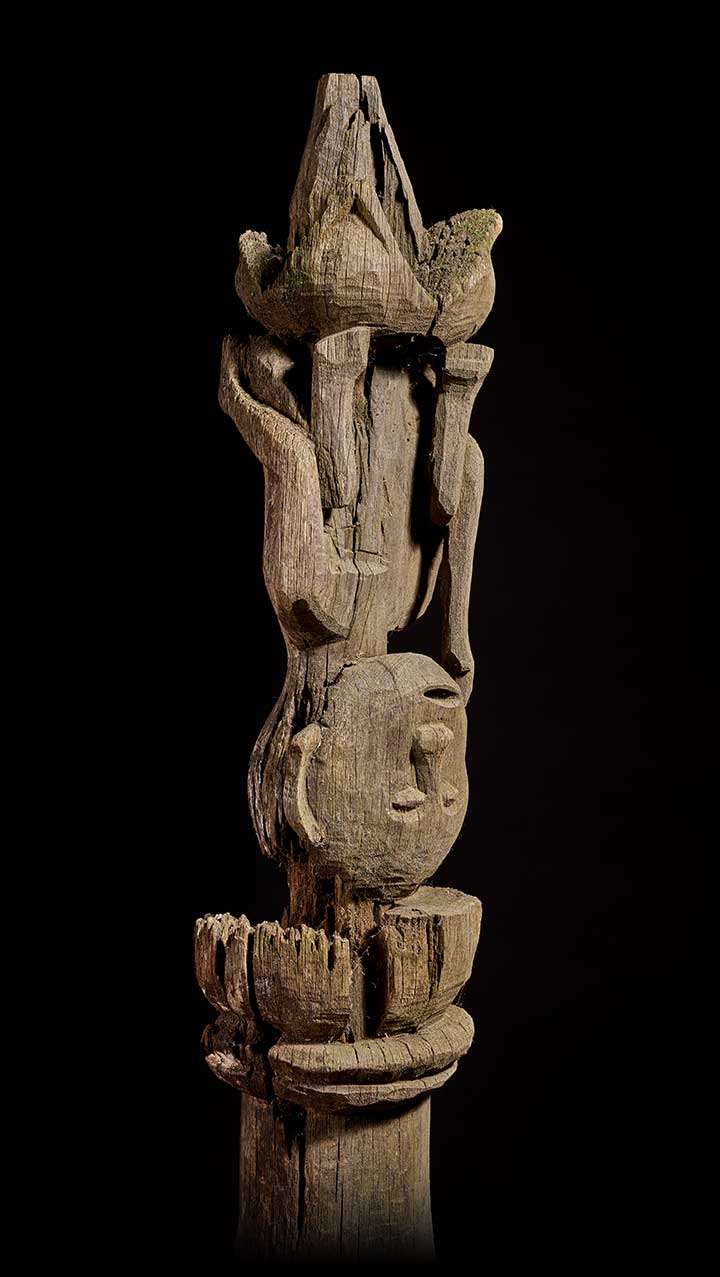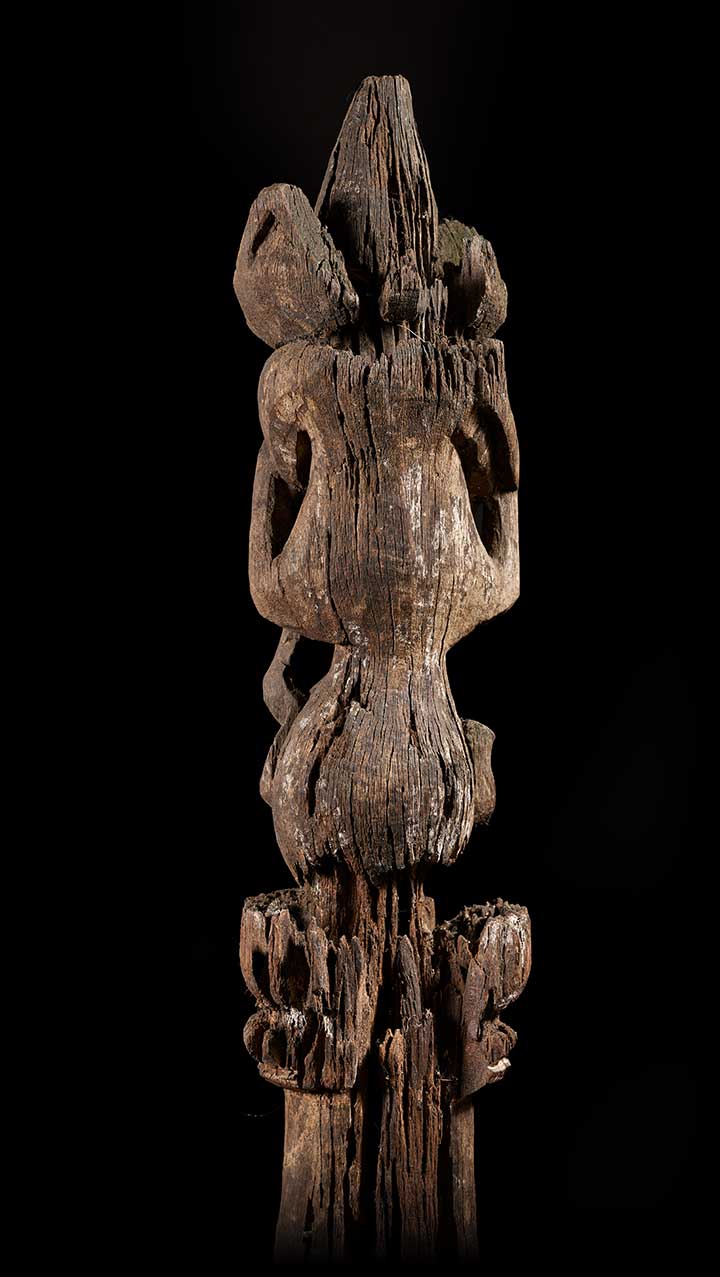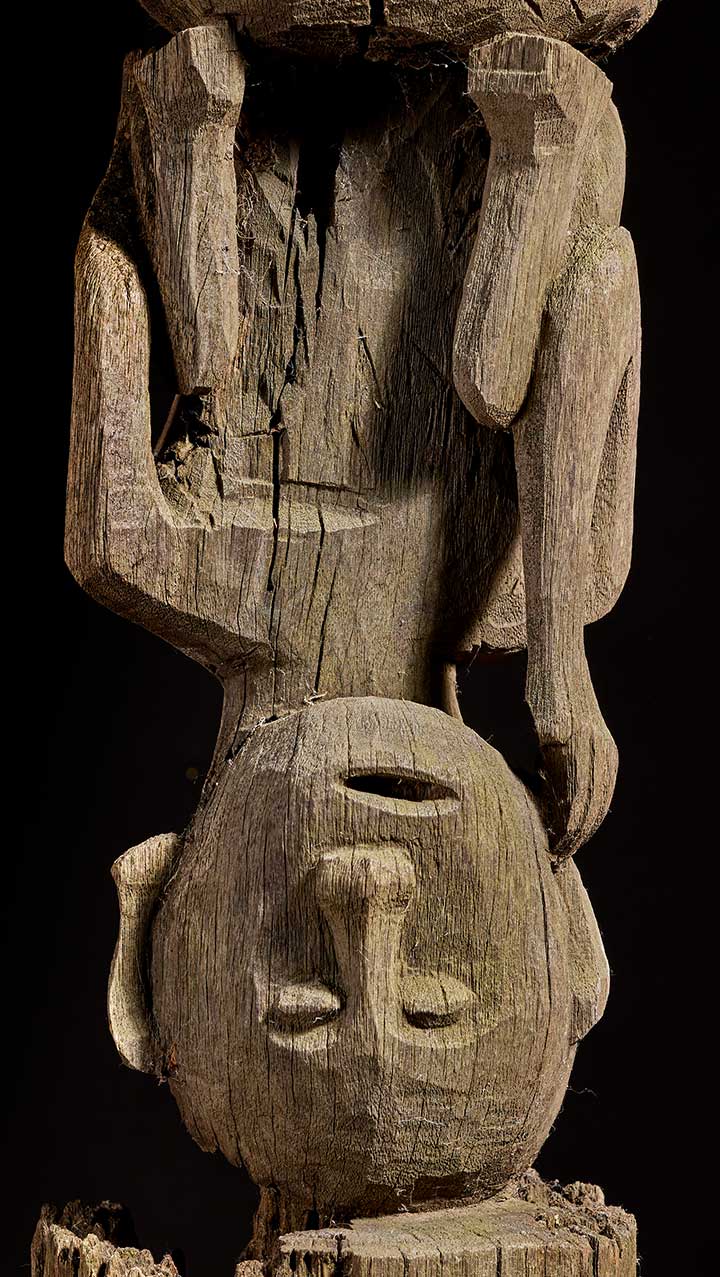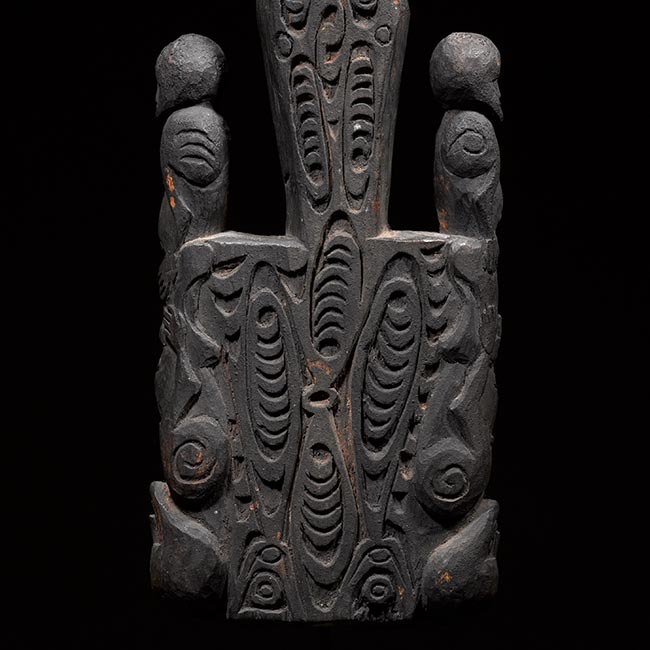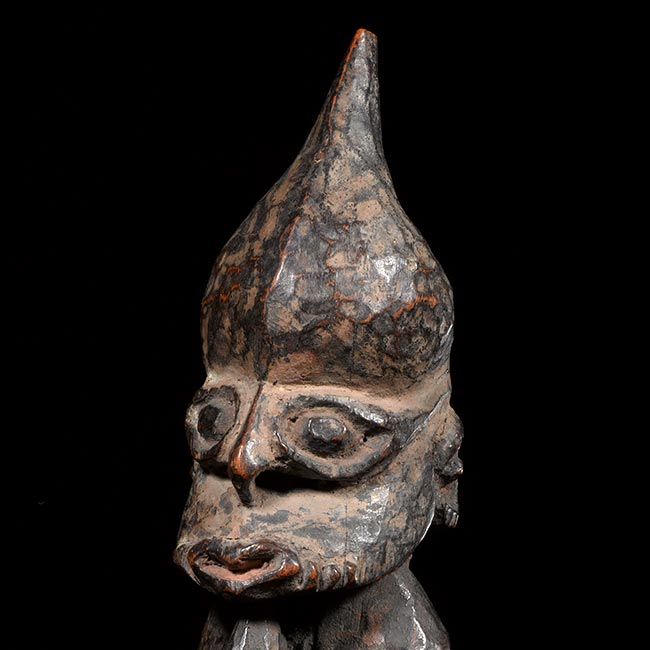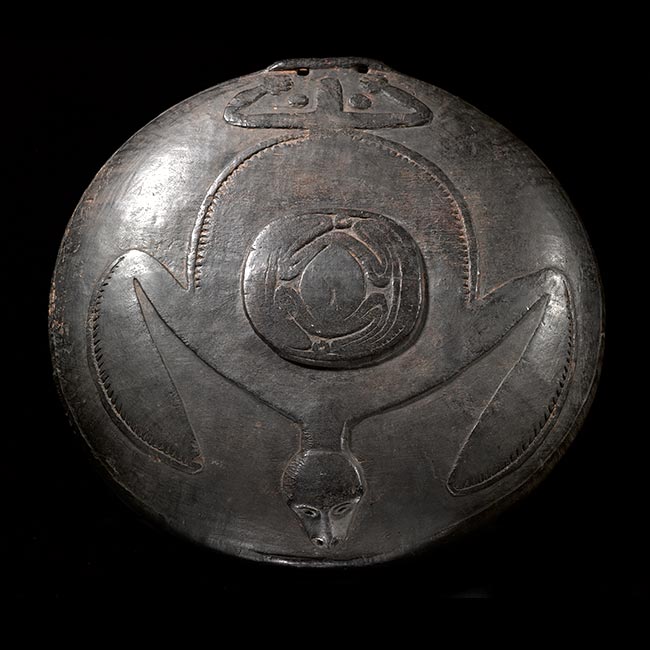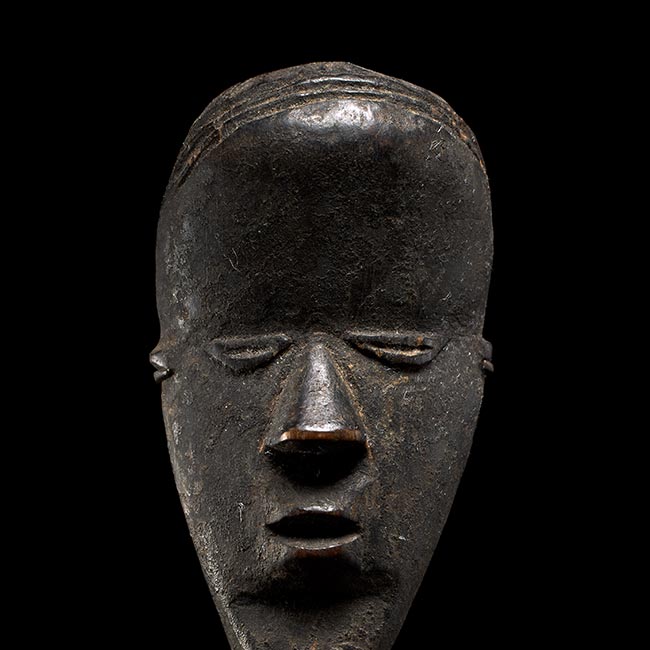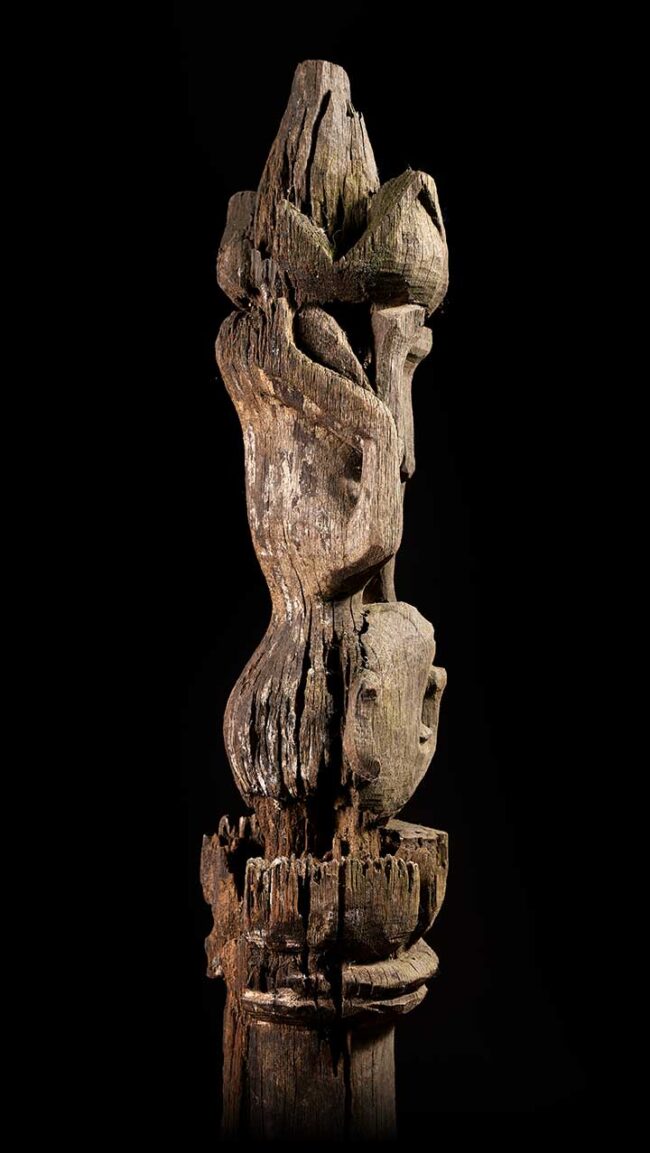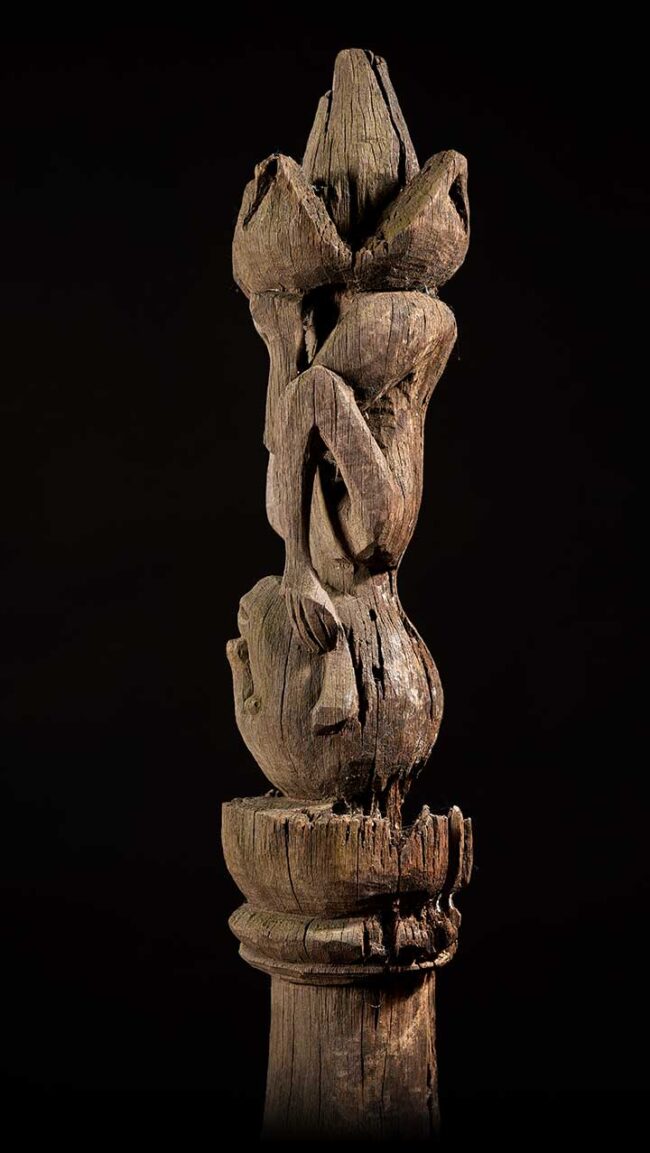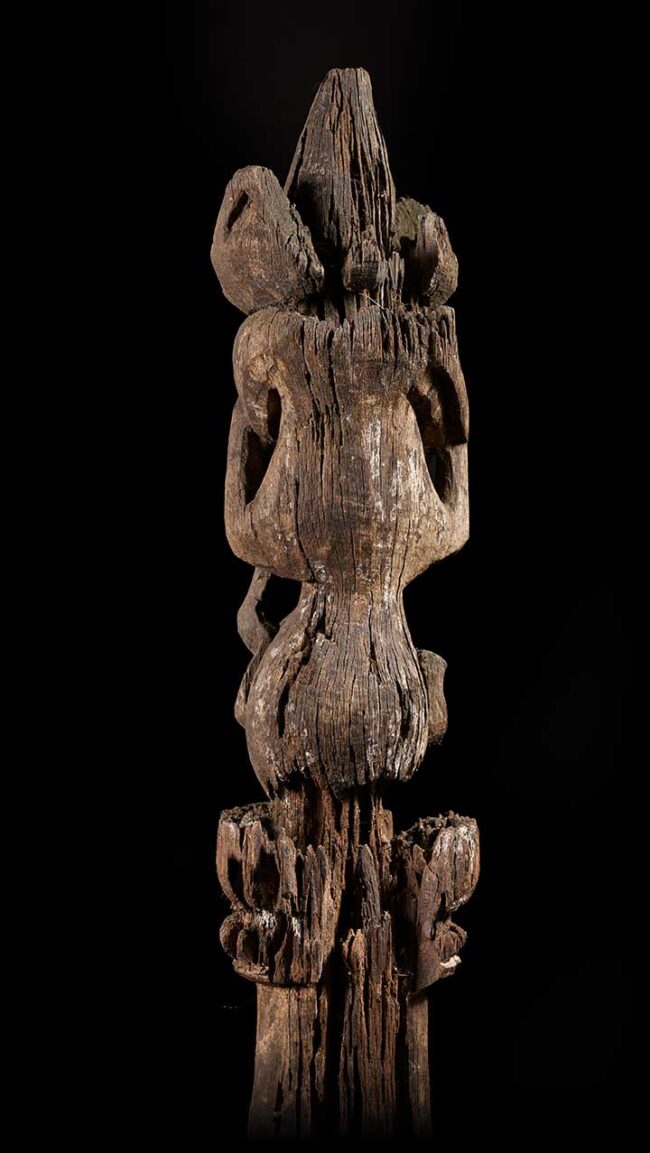Hampatong
Ngaju, Dayak, Central Borneo, Indonesia
Late 19th-early 20th c.
Provenance: Collected in the 1970’s by Emile Deletaille, Brussels
The Dayak people believe that hampatong figures embody guardian spirits or ancestral entities tasked with safeguarding the village from malevolent forces such as evil spirits or intruders. This particular hampatong is highly unusual as it is carved in the form of an inverted figure, a rarity in my experience. While miniature hampatong figures are occasionally depicted in an inverted form, this is the first instance of a large-scale hampatong figure I have encountered fashioned in this manner. Throughout the annals of human art history, across various cultures, inverted or upside-down representations have been linked with the portrayal of the deceased. It is widely held that inversion serves as a symbolic means of denoting figures as representing the departed or ancestors. The Dayak believe that death is an inversion of life. In many cases, hampatongs were crafted as effigies of esteemed deceased members of the tribe. This particular inverted example appears to leave no room for doubt regarding its portrayal as an important ancestor who has passed. The patina adorning the figure bears the weathered marks of time, revealing traces of wear from prolonged exposure to the elements. Despite this, the piece remarkably maintains its integrity, serving as a poignant testament to its enduring significance.
Hampatong
Ngaju, Dayak, Central Borneo, Indonesia
Late 19th-early 20th c.
Provenance: Collected in the 1970’s by Emile Deletaille, Brussels
The Dayak people believe that hampatong figures embody guardian spirits or ancestral entities tasked with safeguarding the village from malevolent forces such as evil spirits or intruders. This particular hampatong is highly unusual as it is carved in the form of an inverted figure, a rarity in my experience. While miniature hampatong figures are occasionally depicted in an inverted form, this is the first instance of a large-scale hampatong figure I have encountered fashioned in this manner. Throughout the annals of human art history, across various cultures, inverted or upside-down representations have been linked with the portrayal of the deceased. It is widely held that inversion serves as a symbolic means of denoting figures as representing the departed or ancestors. The Dayak believe that death is an inversion of life. In many cases, hampatongs were crafted as effigies of esteemed deceased members of the tribe. This particular inverted example appears to leave no room for doubt regarding its portrayal as an important ancestor who has passed. The patina adorning the figure bears the weathered marks of time, revealing traces of wear from prolonged exposure to the elements. Despite this, the piece remarkably maintains its integrity, serving as a poignant testament to its enduring significance.



